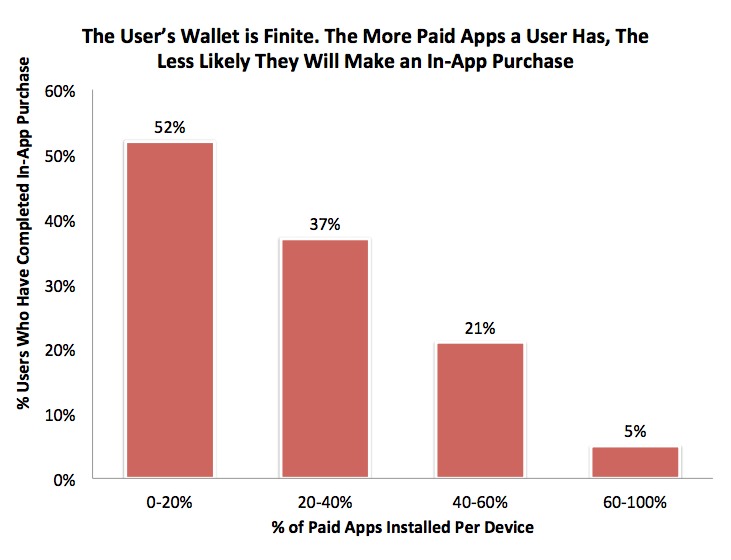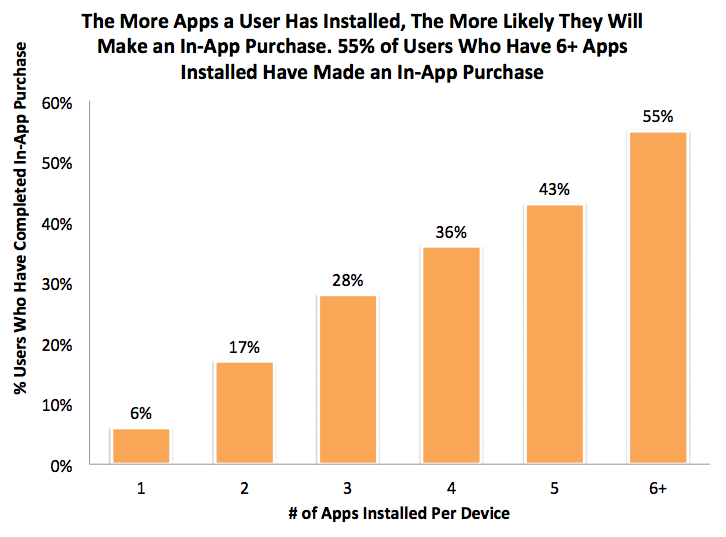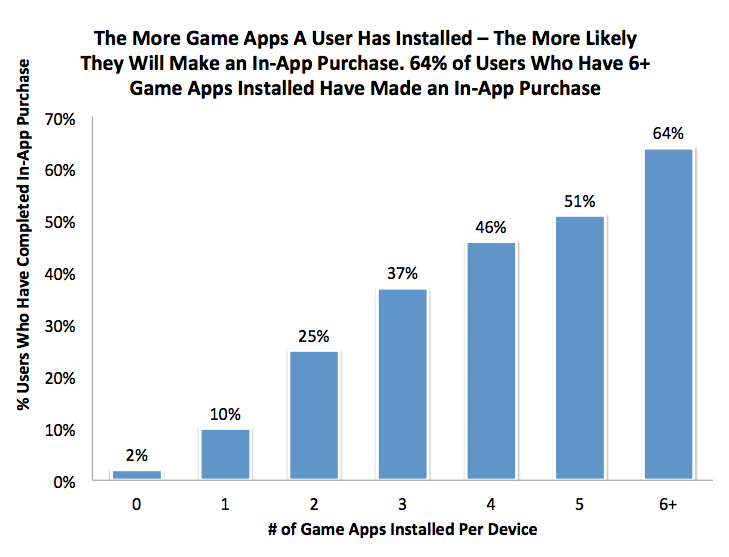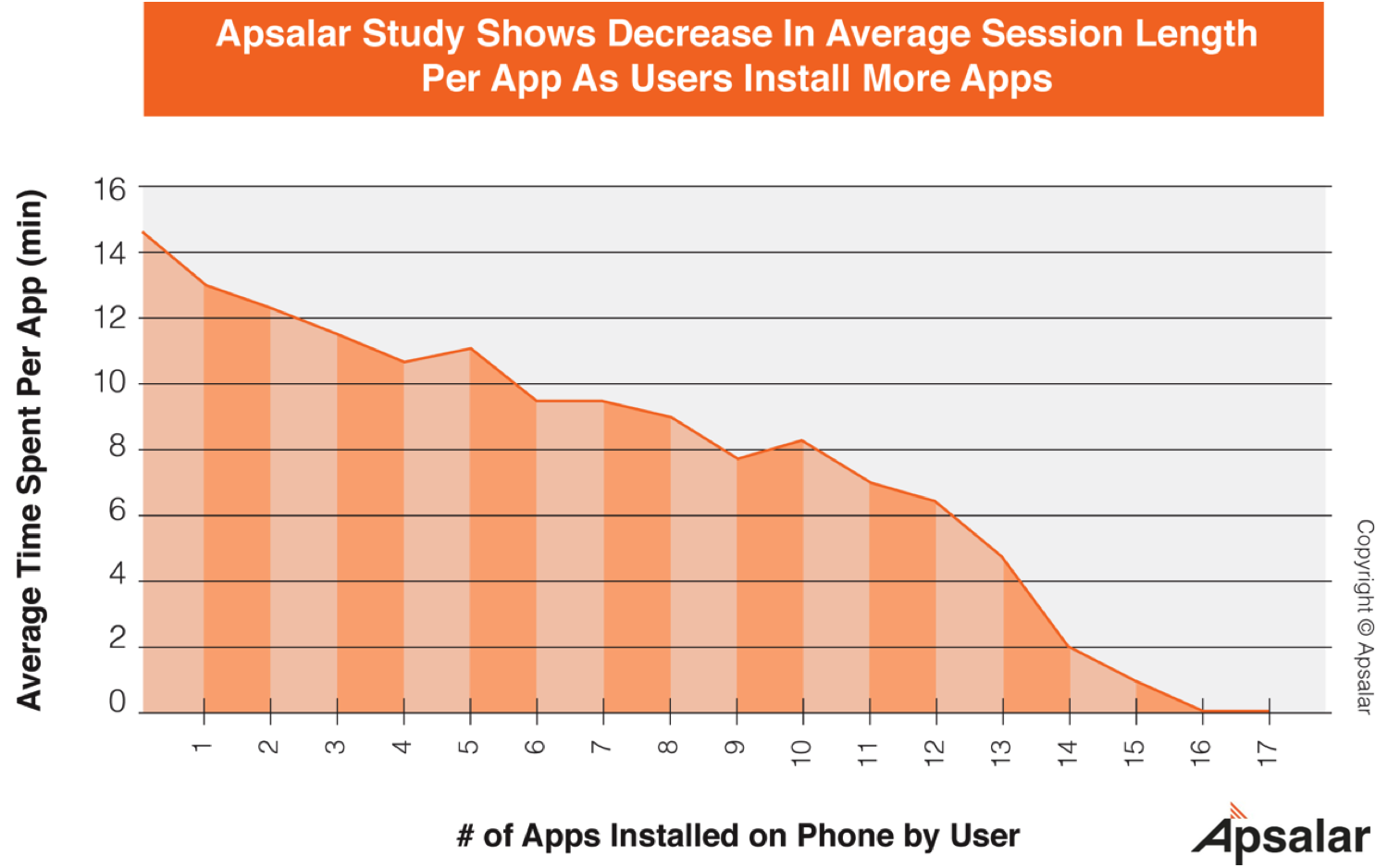 In-app purchases have become the predominant way that mobile developers monetize their work, with the bulk of iOS’s top 25 grossing apps being free-to-play. One company, the U.K.’s NaturalMotion, even made $12 million through in-app purchases on iOS in a single month for CSR Racing, so these microtransactions are starting to add up in a big way for venture-backed mobile startups.
In-app purchases have become the predominant way that mobile developers monetize their work, with the bulk of iOS’s top 25 grossing apps being free-to-play. One company, the U.K.’s NaturalMotion, even made $12 million through in-app purchases on iOS in a single month for CSR Racing, so these microtransactions are starting to add up in a big way for venture-backed mobile startups.
Analytics company Apsalar took a deeper look into factors that predict spending inside mobile apps and more specifically, how the quantity of apps a user has affects their spending habits.
Somewhat counter-intuitively, users with a greater percentage of paid apps tend to spend less inside free ones. Apsalar speculates this is because consumers have a limited budget and paid apps serve as an economic substitute for in-app purchases.
Now while it might be hard for an individual developer to know how exactly many apps a customer has, developers can decide where and how to cross-promote their work in other games or apps. So a game developer might choose not to cross-promote their free app in another paid game if it means that there’s a lower chance that the end-user will pay for virtual currency.
Then somewhat unsurprisingly, the more apps a consumer has, the more likely they’ll spend inside one. If they are invested enough in downloading tons of apps, they might be likely to spend more inside of them as well. More than half of users who have more than six apps will go on to make an in-app purchase, compared to 6 percent of those who only have one app. (Of course, it’s kind of hard to imagine someone with fewer than five apps on their smartphone.)
Similarly, the more games they have, the more likely they are to make an in-app purchase.
There’s a flipside to this trend though. The more apps a user has, the less time they spend on average in each individual app. Logically, it makes sense if a user has dozens of apps, they’re not going to have enough free time to spend above a certain amount in each of them.
The stats above are from 250 million unique mobile devices on and over 100 billion user actions in Apsalar’s network. The company, which is backed by more than $5.8 million in funding from Thomvest and Battery Ventures, recently launched an engagement service for app developers who want to target users with promotions based on their previous behavior.


